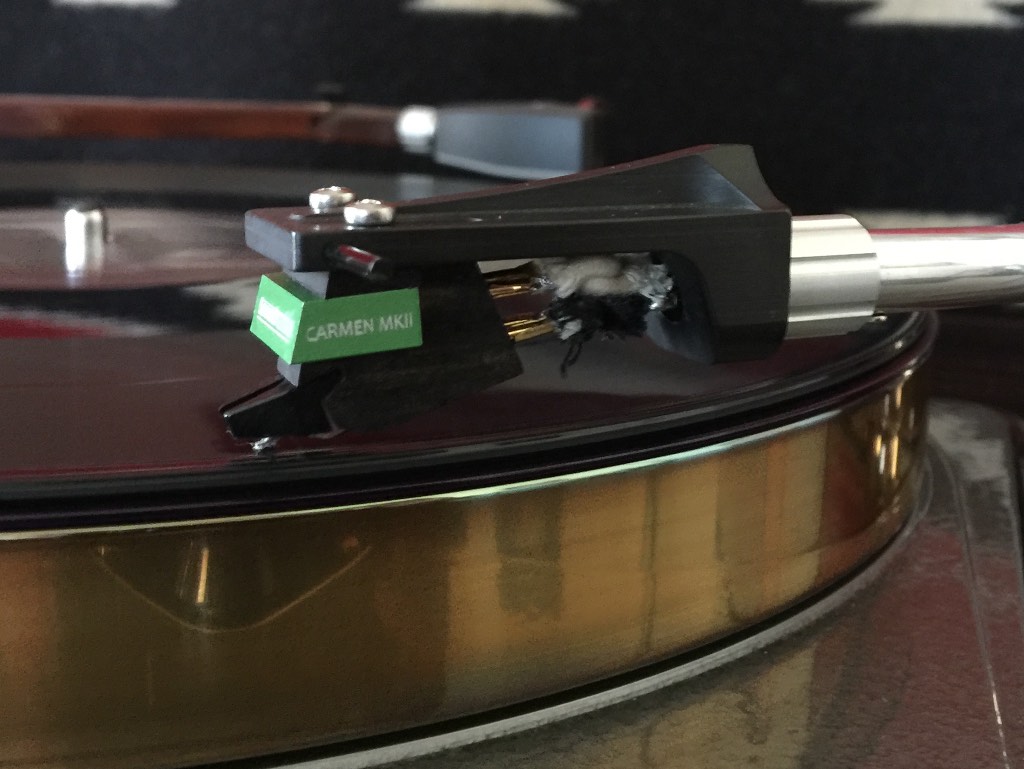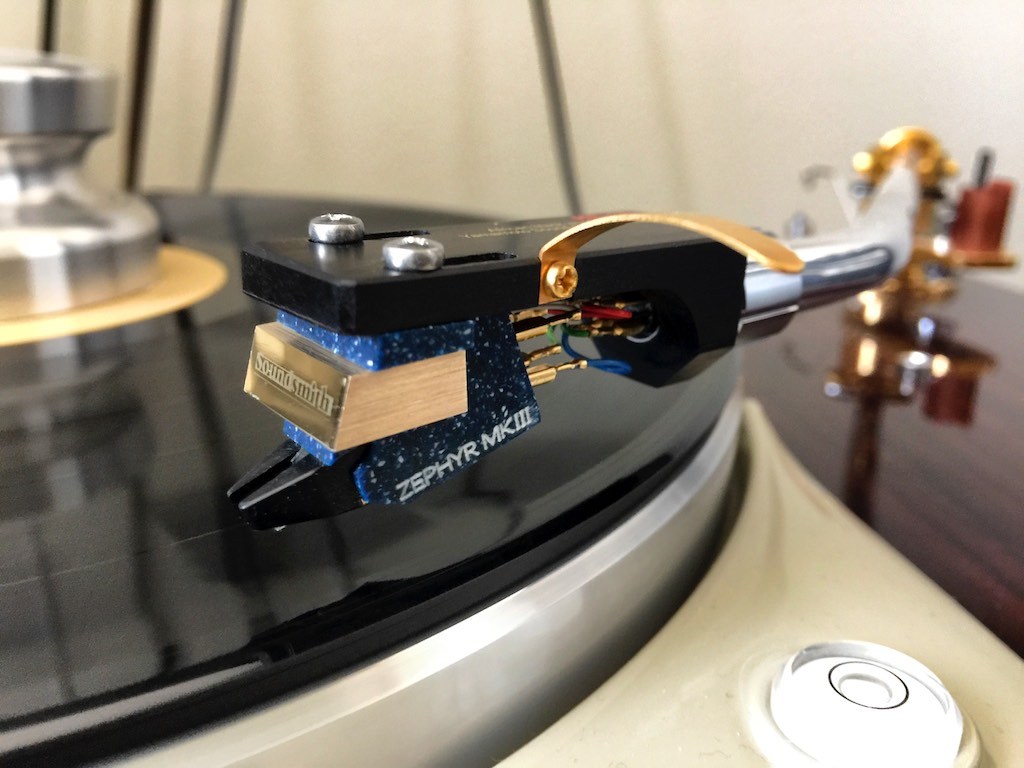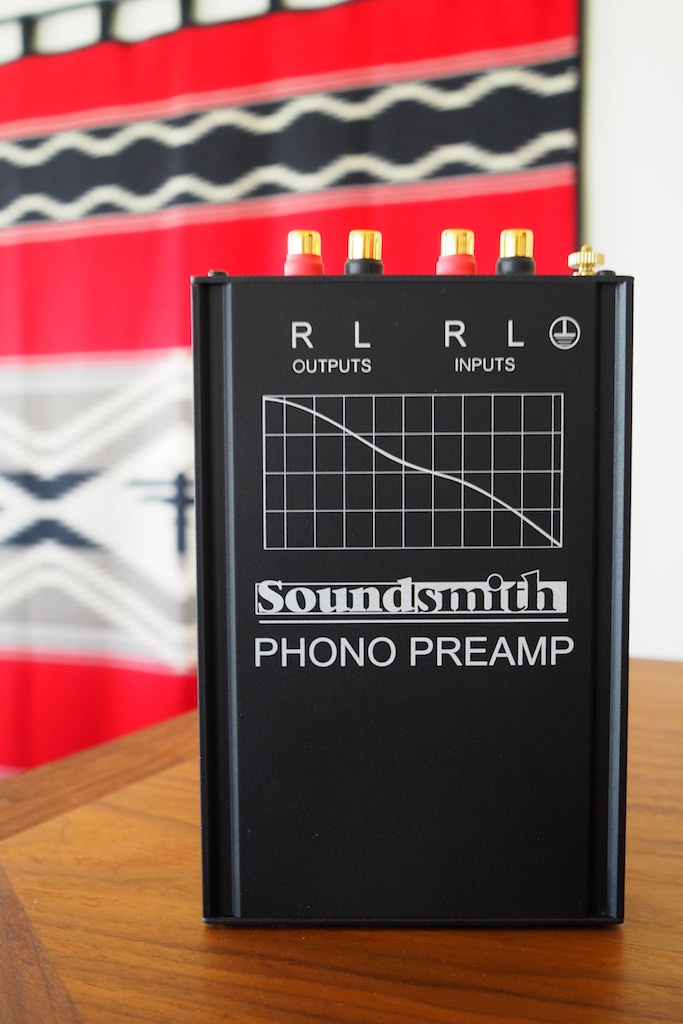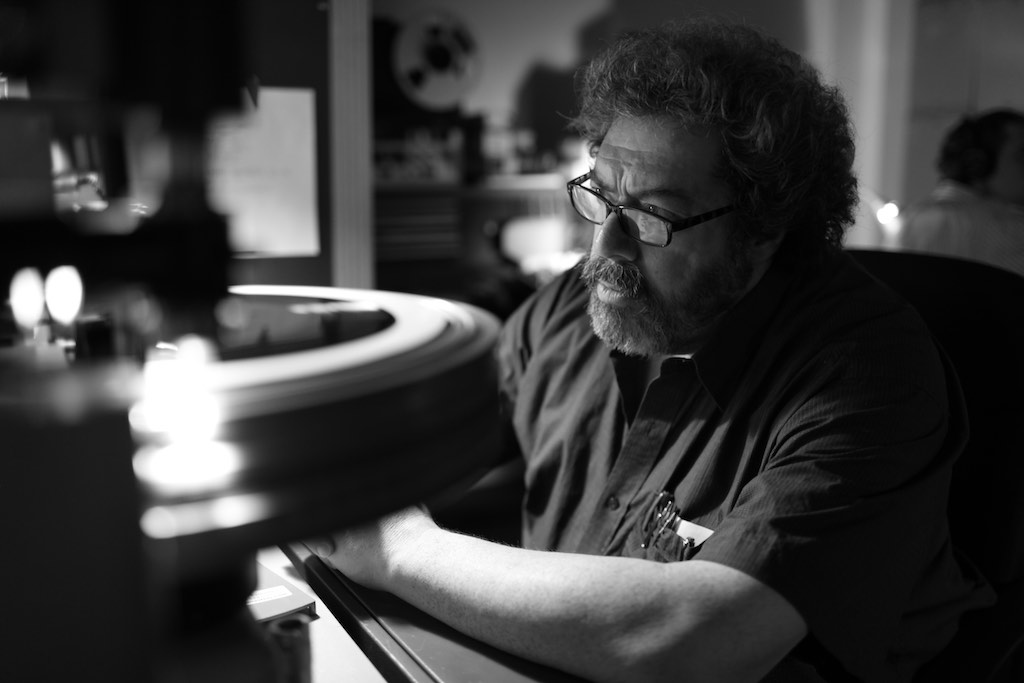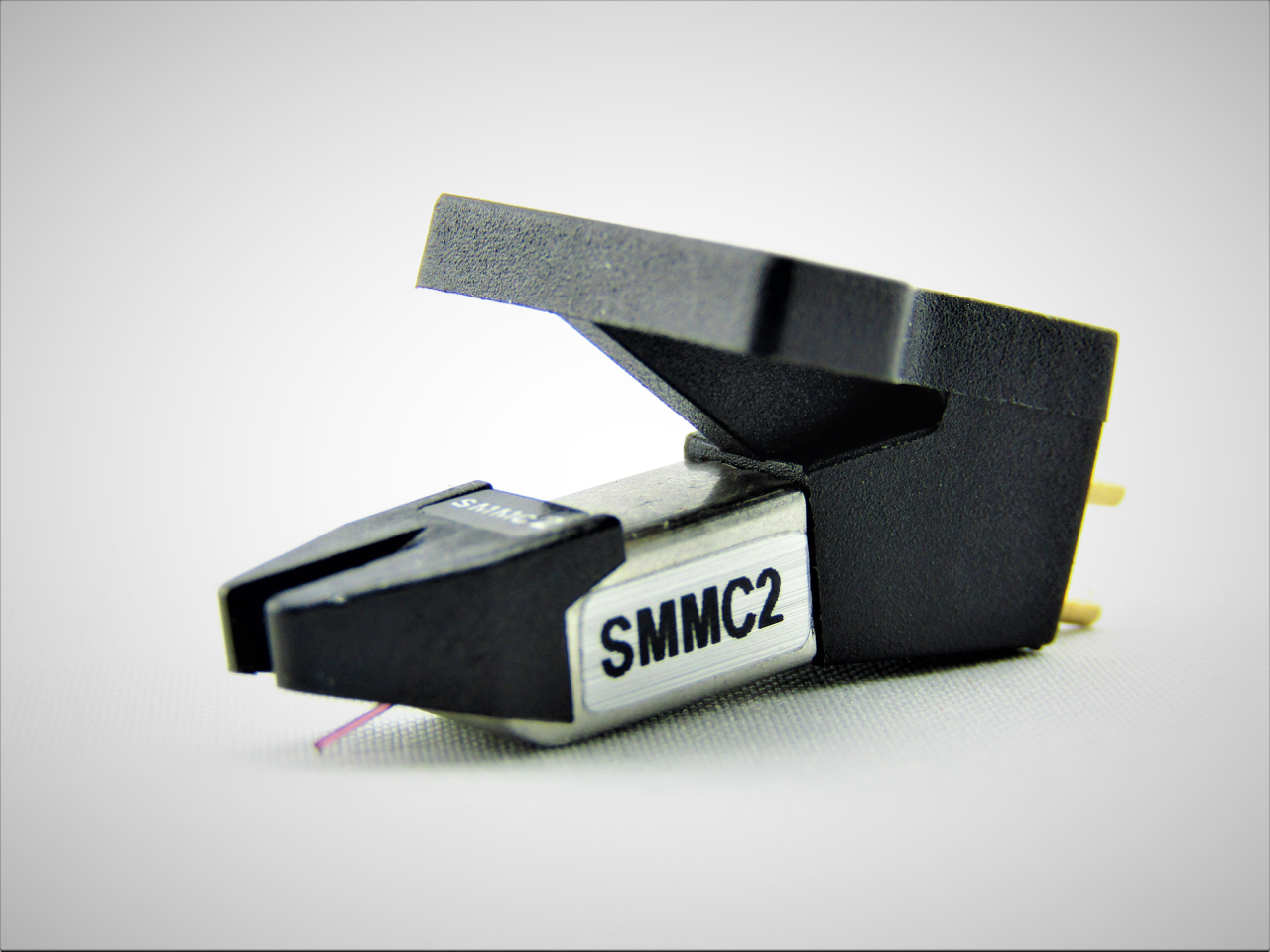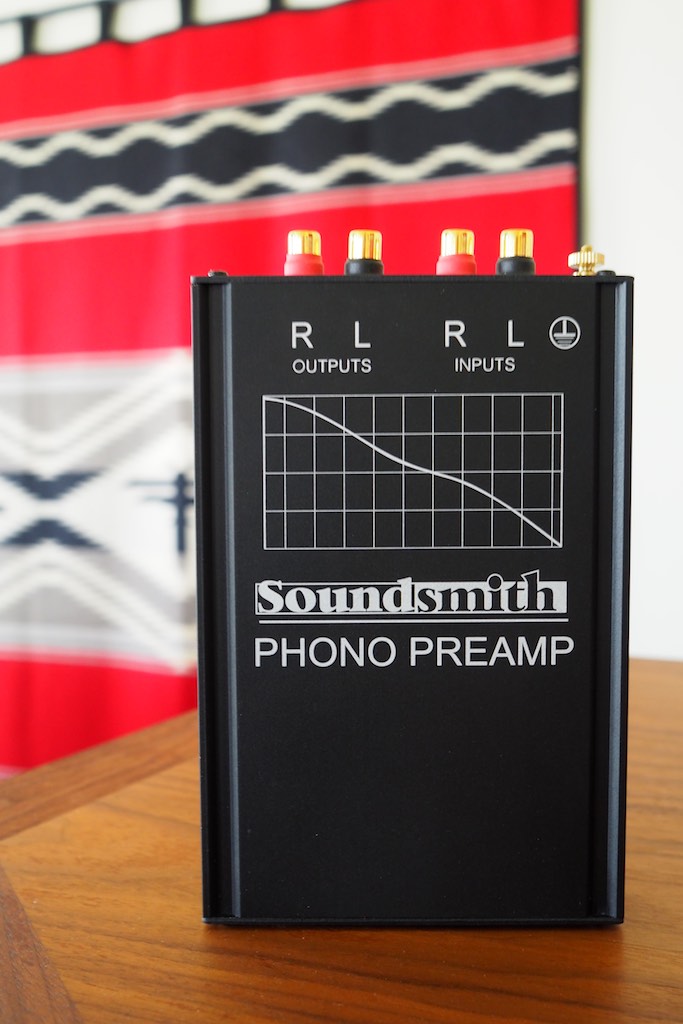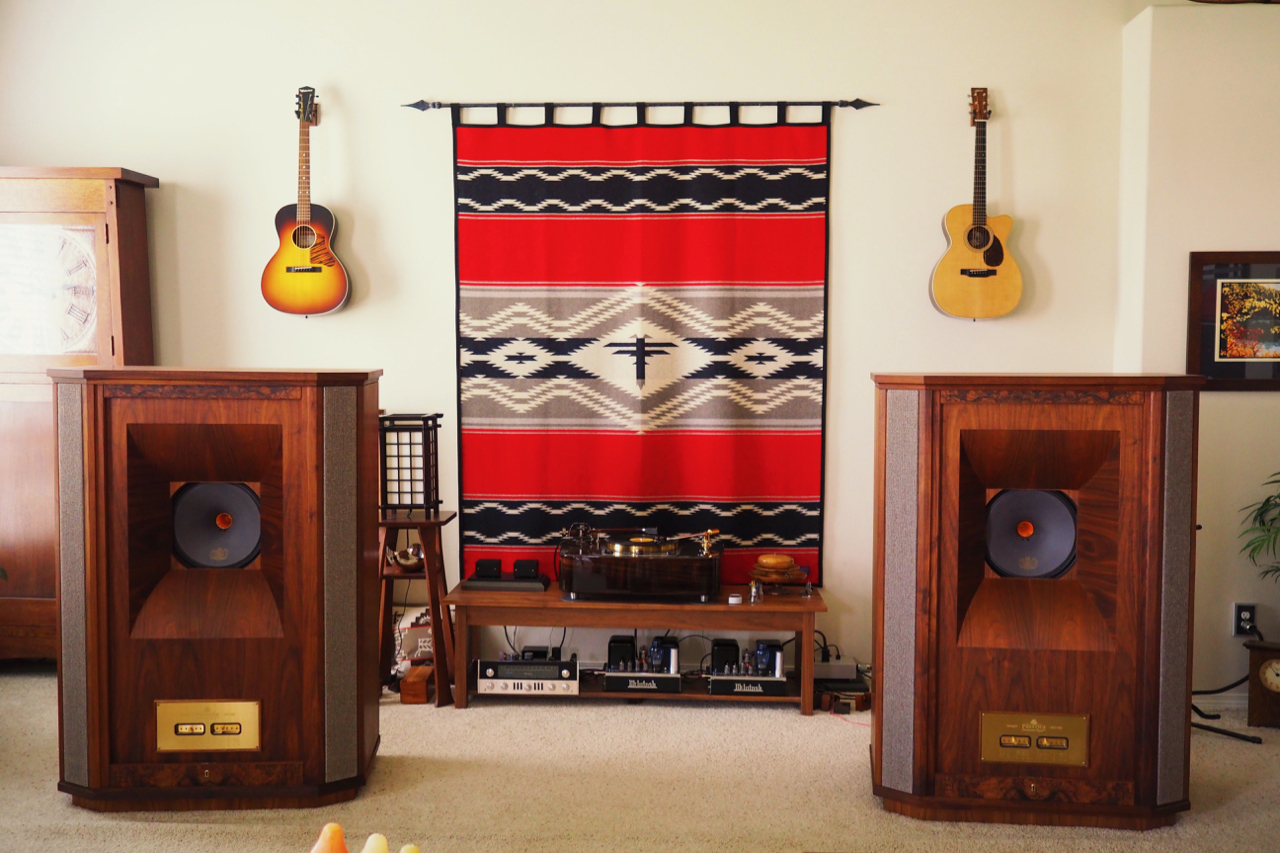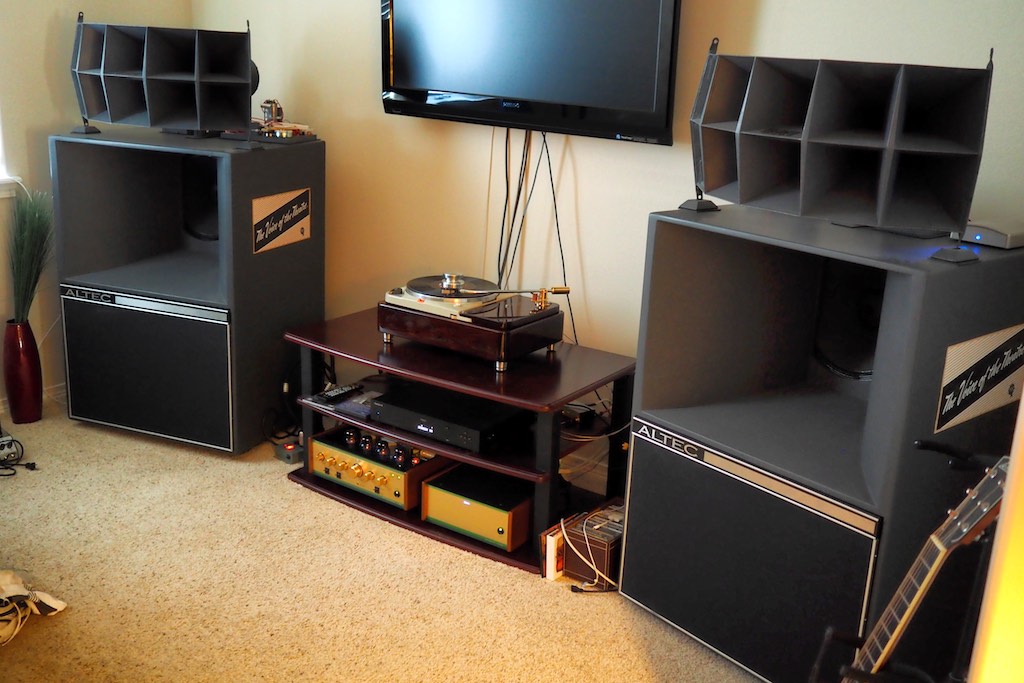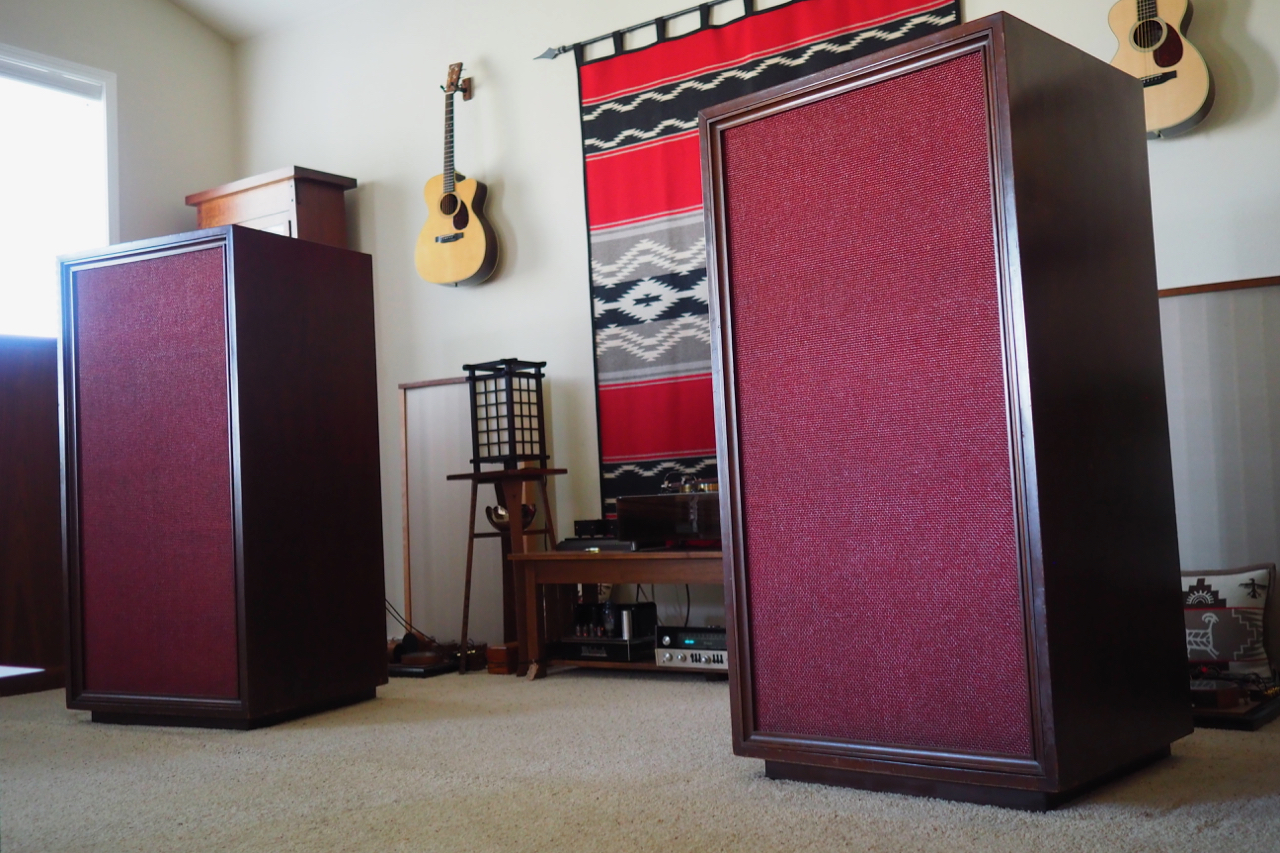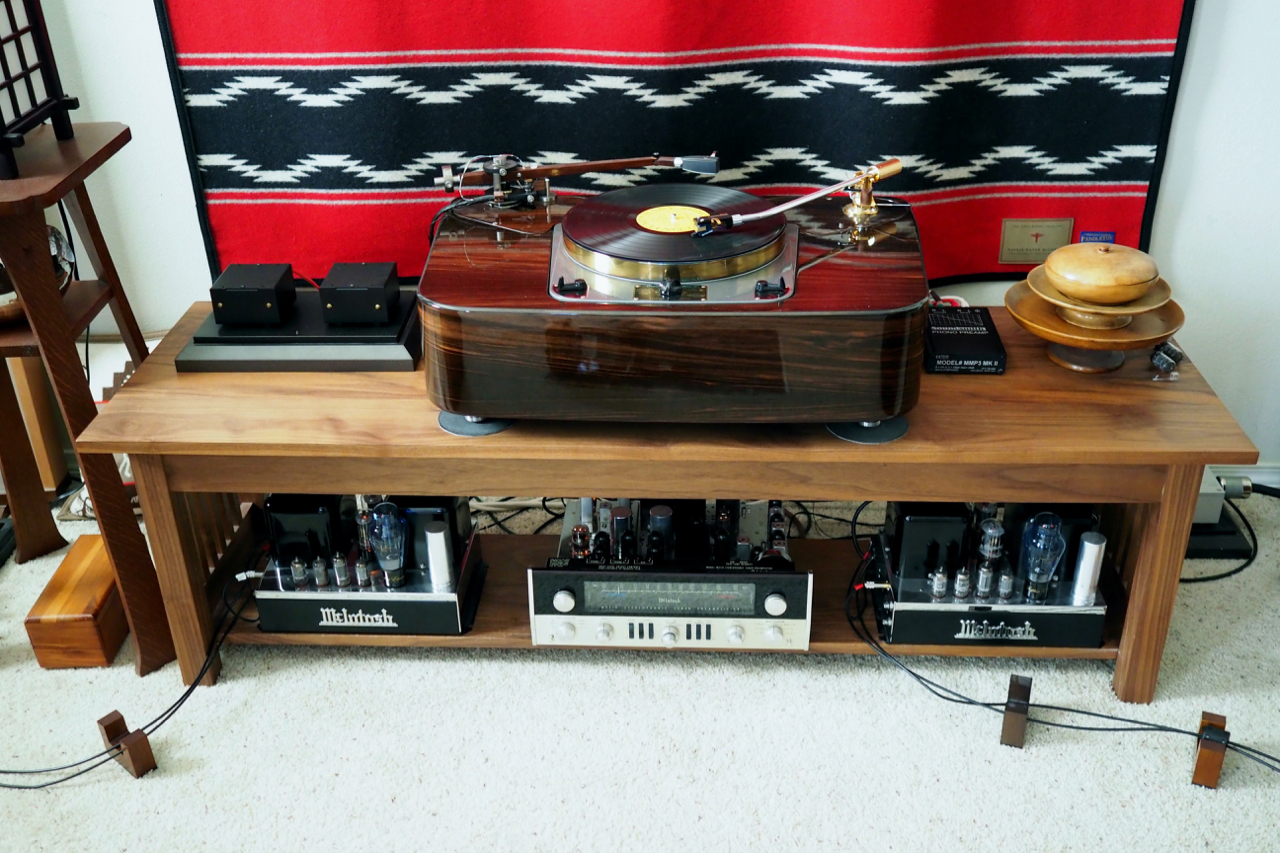I enjoy giving you a "sneak peek" into my Positive Feedback reviews before the full review gets published by ye ol' editors Dave and David.
I am in the process of writing up the final listening impressions of the Soundsmith MMP3 Mk II phono preamplifier review now, and I hope to have the full article done by next weekend and up and published at Positive Feedback.
Below is my "sneak peek" into the Soundsmith MMP3 Mk II phono review for you, and I hope you enjoy it!
¸¸.•*¨*•♫♪¸¸.•*¨*•♫♪¸¸.•*¨*•♫♪
Peter Ledermann is the Artisan Smithy of Sound, Part 3: The Soundsmith MMP3 Mk II Phono Preamplifier!
If you read Parts 1 and 2 of my Soundsmith review series in Positive Feedback Issue 98, where I wrote about the new Carmen Mk II (HERE) and new Zephyr Mk III (HERE) phonograph cartridges, you know that I found Peter Ledermann’s designs to be among the most musically satisfying phonograph cartridges I have ever listened to.
The new Soundsmith Carmen Mk II phonograph cartridge demonstrated desirable qualities in abundance by being relatively affordable ($1000 USD), having a naturally warm, dimensional, and musical balance, and with the added bonus of having a relatively high output so you don’t have to use an expensive step-up transformer with it to play music.
In fact, the Carmen Mk II was every bit as good both musically and sonically as my reference Ortofon SPU Classic GM MkII stereo phono cartridge combined with my Intact Audio custom step-up transformer at about one-fifth their combined cost.
The Carmen Mk II has become my go-to recommendation for those who want to enrich their musical life with a new high-performance phonograph cartridge that possesses both superb musical and sonic prowess without breaking the bank.
I was caught by surprise when the new Soundsmith Zephyr Mk III ($1500 USD) significantly humbled my favored Ortofon & Intact Audio SUT combo both musically & sonically, and at only about one-third their combined price, to deliver the most alluring live-like musical presentation I’ve ever heard from my Westminster Royal SE loudspeakers.
The new Zephyr Mk III is a truly remarkable cartridge, and let me encourage you to give a Zephyr Mk III a listen even if you’re thinking about spending $5000 to $10000 on a new phonograph cartridge. The new Zephyr Mk II is that good, and just think about how many new records you can get for your music library with the money you have left over.
The focus of this article is Peter Ledermann’s Soundsmith MMP3 Mk II phono preamplifier. If you have been following the posts at my blog, you know I have been impressed with the MMP3 Mk II’s musical and sonic performance, that even when compared to the very musical vacuum tube phono preamplifiers that I use as references, the Soundsmith MMP3 Mk II phono preamplifier easily held its own.
Considering the Soundsmith MMP3 Mk II phono preamplifier’s excellent performance, its innovative and high-quality solid-state design, it’s a bargain at the budget friendly price of $800 USD.
Before I delve into the details of this excellent and affordable phono stage let me tell about the artisan smithy of sound who designed it, Peter Ledermann.
Peter Ledermann is the Soundsmith
I’d like to start by telling you about the fascinating smithy of sound, Peter Ledermann.
Peter opened Soundsmith as a repair center in 1969, at Audio Experts in White Plains, NY, and Peter has now been smithing sound for 47 years!
Since 1969, Peter has taught audio engineering and audio electronics service to students, has worked at RAM Audio in Danbury, CT (1973), was Director of Engineering for the Bozak Corporation in Norwalk, CT (1976), has worked at the IBM T.J. Watson research center think-tank (1980), and then in 1991 Peter left IBM to pursue Soundsmith full time.
After Peter established Soundsmith in 1969, Soundsmith evolved into a specialty repair and restoration center with a stellar reputation, servicing audio equipment from all over the world.
Peter has also been designing and building his own phonograph cartridges, and rebuilding all brands of cartridges, for more than 45 years now. Peter currently offers eighteen different Soundsmith phonograph cartridge models that are specifically designed to complement various audio enthusiasts’ tastes and system needs. If you have a specific or unique application in mind, I recommend you contact Peter and ask for advice, just as I did.
In addition to Peter’s Soundsmith line of phonograph cartridges, Soundsmith is also the world center of expertise related to B&O phonograph cartridges, and is licensed by B&O to manufacture their cartridge designs. Shown above is a photo of the Soundsmith SMMC2 (B&O) plugged into the Soundsmith 1/2” adapter, which allows its use on non-B&O tables as well as B&O tables. If you are a B&O aficionado, or just want to learn more about Soundsmith’s B&O phonograph cartridges and services, you can read more about them HERE.
Peter also offers phono preamplifiers (like the MMP3 Mk II which I’ll be telling you much more about in a few moments), various useful accessories, loudspeakers, Strain Gauge cartridge/preamplifier systems, and audio amplifiers, all which you can read more about at the links HERE.
The Soundsmith MMP4 Mk II, MMP3 Mk II, and MCP2 Mk II Phono Preamplifiers
Peter offers three Soundsmith phono preamplifiers to satisfy different audio system needs, the MMP4 Mk II ($600 USD) and MMP3 Mk II ($800 USD) that are for high and medium output phono cartridges (e.g. moving magnet or Soundsmith medium or high output cartridges), and the MCP2 Mk II ($1200) for low output phonograph cartridges (moving coil or Soundsmith low output phonograph cartridges).
The standard input loading for both the MMP4 Mk II and the MMP3 Mk II is 47k 100pF, but for those who would like to specify different loading options they are available upon request for a $100 up-charge.
The standard gain for the MMP4 Mk II and MMP3 Mk II is 43dB, but they can also be special ordered as a low gain version (34dB) for use with very high output phono cartridges (greater than 4.5mV).
The MMP4 Mk II is a low noise (-92dB) phono preamplifier suitable for most systems, and the MMP3 Mk II is an ultra-low noise (-93dB) phono preamplifier built with “high end audio grade components” for systems where ultra-low noise is desirable, as with my collection of very sensitive vintage Altec horn loudspeakers, for example.
The MCP2 Mk II phono preamplifier for moving coil (or other low output phonograph cartridges) features fully shielded internal step-up transformers for ultra-low noise and the lowest possible distortion, along with “ultra-grade audio grade components used throughout”.
The MCP2 Mk II phono preamplifier’s input loading is continuously variable between 10 Ohms to 5K Ohms via a variable resistance control knob on the top of the chassis, with a 220pF capacitive load, and a gain of 62dB.
For those who want to drive very long interconnects, there are an optional 50 Ohm versions of the MMP4 Mk II, MMP3 Mk II, and MCP2 Mk II available for an additional $300 USD.
Peter’s handmade preamp circuits for the MMP4 Mk II, MMP3 Mk II, and MCP2 Mk II are housed in aluminum chassis that are seven inches deep, one and half inches high, and four and a quarter inches wide, and are powered by an external DC “wall-wart” power supply.
I asked Peter if there was anything he would like to share about his phono preamplifier designs, and he told me the following:
“The MCP2 Mk II and MMP3 Mk II employ the finest circuitry available at very reasonable pricing. This includes our ultra-low distortion, high gain circuitry, featuring extremely low noise.”
“Passive circuit components are comprised of selected high-tolerance low-noise devices, as well as selected high-grade polystyrene capacitors for the critical RIAA filter components. We employ proper impedance driving circuitry and passive RIAA stages for a state-of-the-art result.”
“Low noise, low distortion, and excellent RIAA compliance, along with Soundsmith’s unique built-in rumble filter system that does not degrade signal integrity or performance in any way.”
“The MCP2 Mk II also employs Soundsmith’s designed and built fully-shielded step-up transformers as well as a top mounted user control for continuously variable loading from 10 Ohms to 5K Ohms. This allows the user “on the fly” perfect loading choices for use with any low output cartridge.”
If you are unsure which Soundsmith phono preamplifier would best suit your phono cartridge and overall system needs, I recommend that you ask Peter for advice, just as I did.
For example, in my various audio systems for this Soundsmith review series, I was going to be using the high output Soundsmith Carmen Mk II (2.12 mV) and Zephyr Mk III (2.4 mV) phonograph cartridges, and additionally, all four of the audio systems that I use for reviews are based on high-sensitivity loudspeaker systems which are more susceptible to noise than the usual lower sensitivity loudspeakers that abound in the market.
So, for this particular hifi equipment context, where I would be using high-output phonograph cartridges along with various high-sensitivity loudspeaker systems, Peter recommended the Soundsmith MMP3 Mk II that is designed for medium to high output phono cartridges, and which also has ultra-low noise to complement the high-sensitivity loudspeakers systems I favor.
Review Systems
I did preliminary listening sessions with the Soundsmith MMP3 Mk II phono preamplifier in a several different systems to get broader insights into its musical & sonic performance, my Tannoy Westminster Royal SE loudspeaker-based audio system, as well as my vintage Altec A5 Voice of the Theatre loudspeaker-based audio-visual system.
In my Tannoy Westminster Royal SE loudspeaker-based audio system the Soundsmith MMP3 Mk II compared very favorably with my classic vintage McIntosh MX110Z tuner-preamplifier’s all vacuum tube phono preamplifier, where it sounded musically natural, emotionally engaging, and sonically excellent.
In my vintage Altec A5 Voice of the Theatre loudspeaker-based audio-visual system the Soundsmith MMP3 Mk II also compared very favorably with my vacuum tube Leben RS30-EQ phono preamplifier, where it again sounded compellingly musically, emotionally engaging, and sonically excellent.
However, for this review my focus will be providing detailed impressions of the Soundsmith MMP3 Mk II phono preamplifier in a very special vintage system that is currently taking shape in my primary music listening room in preparation for the upcoming Duelund-Altec Project article for Positive Feedback.
The Duelund-Altec Project will be showcasing the new state-of-art Duelund Coherent Audio CAST tinned-copper capacitors, inductors, and resistors in custom crossovers for a very special pair of vintage Altec loudspeakers, which have now have been moved into my primary music listening room in place of my Tannoy Westminster Royal SE loudspeakers.
Altec made these custom loudspeakers for conductor Leopold Stokowski (1882-1977) for him to listen to music at home with while he lived in New York. The Stokowski Altec’s individual components suggest early Altec A7 Voice of the Theatre loudspeakers, with 803B 16-Ohm bass drivers housed in modified 825 style bass horn cabinets, Altec 804A 16-Ohm compression drivers on Altec 511B horns, and Altec N-500-D crossovers.
The primary difference between Altec A7’s and the Stokowski Altec’s are the massive wooden cabinets the speakers were enclosed in to make them domestic-friendly from an appearance standpoint.
Eagle-eyed reader, Grant, also pointed out to me that the cabinets that enclose the Stokowski Altec’s provide substantial reinforcement for the 825 style bass horns. “For example, the Stokowski’s divider shelf between the two horn sections, which would be an 825’s top panel, acts as a massive cross-brace to the cabinet’s sidewalls. The rear of the cabinet is broken into three segmented panels with further cross-bracing for the sidewalls, whereas the 825 is a large single screw-mounted panel with no cross-bracing. And because the front panels are inset on the oversized sidewalls, they too are acting as bracing. The mounting panel for the 511B may also be acting as yet another cross-brace, but I can’t tell for sure from the photos (they do – Jeff). The rigidity of the Stokowski cabinet is probably off the charts compared to the 825.”
The production of Altec A7 Voice of the Theatre loudspeakers commenced in 1966, so these custom Altec speakers that were built for Dr. Stokowski would have preceded the commercial release of the Altec A7’s by at least a couple of years, as they were probably made during the period when their drivers were produced, 1961 to 1964.
Visitors to my listening room have been wowed by the sublime performance of these vintage Stokowski Altec’s, and about half of them have even preferred them to my hot-rodded Tannoy Westminster Royal SE loudspeakers, which is sort of amazing, given the Westminster’s are very formidable loudspeakers in their own right.
The Stokowski Altec’s were placed into my primary music system where the West’s normally reside, using exactly the same mix of components that I’ve been listening to with the West’s.
As a source in this system I use a Classic Turntable Company hot-rodded Garrard 301 in an Artisan Fidelity plinth, with an Ortofon SPU Classic GM MkII stereo phono cartridge mounted on a Woody SPU tonearm, stepped up with a bespoke Intact Audio dual mono SUT, and a Soundsmith Zephyr Mk III stereo phono cartridge mounted on a Thomas Schick tonearm.
The Ortofon SPU Classic GM MkII / Woody SPU tonearm / Intact Audio dual mono SUT combination and Soundsmith Zephyr Mk III / Schick tonearm / Soundsmith MMP3 Mk II were connected with Duelund DCA20GA and DCA16GA interconnects, respectively, to a vintage McIntosh MX110Z tuner-preamplifier (with Duelund CAST Sn-Cu caps in the cathode follower position), and Duelund DCA20GA interconnects connect the preamp to my hot-rodded vintage McIntosh MC30 monaural amplifiers. Duelund DCA12GA speaker cables connect the amplifiers to the Stokowski Altec loudspeakers.
Just a quick note about interconnects: I tried 3 different pairs of my favorite DIY-style interconnects that I use for reviews with the Soundsmith MMP3 Mk II phono preamplifier during the review period, the first being my DIY shielded Duelund DCA20GA interconnects with Switchcraft RCA’s, the second being Belden 8402 microphone cable interconnects with Switchcraft RCA’s, and the third a pair of shielded Duelund DCA16GA interconnects with Duelund RCA’s made for me by Chris at Parts ConneXion.
The Duelund DCA16GA interconnects with Duelund RCA’s made for me by Chris at Parts ConneXion turned out to be my favorites with the Soundsmith Zephyr Mk III cartridge and Soundsmith MMP3 Mk II phono preamplifier, providing a naturally warm presentation, a high degree of transparency, an enchantingly vivid presence of instruments and vocals, a timbrally realistic presentation, and with superb overall balance of musicality & sonics.
Other system components include an Acoustic Revive RTP-6 Absolute NCF power distributor, connected to wall AC by the exotic new Acoustic Revive Absolute Power Cords (in for review), an Acoustic Revive RAS-14-TripleC NCF Power Conditioner (on the turntable), a pair of Acoustic Revive acoustic panels behind the Altec’s, and an Acoustic Revive RR-777 and RR-888 providing Schumann conditioning.
Listening Impressions
I’ll do my best to give you some useful impressions of the Soundsmith MMP3 Mk II phono preamplifier’s performance both musically and sonically, in the context of the Soundsmith Zephyr Mk III / Schick tonearm III / Soundsmith MMP3 phono preamplifier as compared to my reference SPU Classic GM MkII / Woody SPU tonearm / Intact Audio dual mono SUT / internal MX110Z vacuum tube phono preamplifier combination.
Musically speaking, I listened for how close the MMP3 phono preamplifier came to presenting recorded music realistically compared to live music, in terms of timbral realism (the unique ‘voices’ of instruments), the resolution of tone color (the ability to distinctly hear the chordal variations resulting from adding additional pitches to three tone triads), melody (the tune you ‘whistle while you work’), harmony (treble & bass accompaniments to the melody), rhythm (the steady beat that determines the tempo), tempo (speed), dynamics (variations in loudness), and loudness (the ability to play naturally at live-like levels appropriate to a piece of music).
In terms of audiophile-style sonics, I listened to how well the MMP3 Mk II performed in reproducing the non-musical artifacts of the recording process, like transparency (the ability to ‘see’ into the recording), resolution (the amount of perceived fine detail), soundstage (the ability to discern the three dimensions of the recorded space in width, height and depth), the soundspace (the ability to convey the acoustic sense of ‘space’ of the recording venue), and imaging (the ability to localize instruments & musicians on the soundstage).
Overall, the Soundsmith MMP3 Mk II phono preamplifier going through the Aux input of my MX110Z sounded very musically & sonically compelling.
Compared to the vintage vacuum tube phono stage of the McIntosh MX110Z, the solid-state Soundsmith MMP3 Mk II fared well, having a naturally warm & rich presentation that was superbly musical.
¸¸.•*¨*•♫♪¸¸.•*¨*•♫♪¸¸.•*¨*•♫♪
Ok that's it for now, and I'll let you know when the full review goes live at Positive Feedback.
As always, thanks for stopping by, and may the tone be with you!




